When I lived in Massachusetts, I noticed just how different it was from either New York, or Pennsylvania. Massachusetts had bigger homes… huge multi-generational homes. It had large beautiful cemeteries… not the spare plot of earth where you would toss the diseased into like the state of Indiana, and it had statues, and carvings, and character.
After learning about local history, and lore, I came to the realization that the people who lived in Massachusetts, Rhode Island, Connecticut, and similar adjacent states all were founded by people who cared about their environment and their society.
And in many ways, that still exists in Massachusetts.
In those days, people would have picnics in cemeteries. (When was the last time you and your family had a picnic in a cemetery?) And went out for a stroll down the roads and lanes near your house at twilight? They, the people who lived there, designed the environment to be one that was aesthetically and socially appealing. Large lush and deep dark shady trees adorned the roads. Mailboxes, fences, and stairways were designed for beauty and appearance. Instead of the raw brutalist minimalism that had corrupted America since the psychopathic oligarchy took control in 1910.
Back in the day, say after the American Civil War, paintings depicted real art; real beauty. Buildings showed elements of interest and were designed for multi-generational families, and monies were allocated to those purposes. Parks were constantly created, maintained, and expanded upon. Statues were erected, and monuments created.
“The Royal Opera House In Valletta, Malta (1911). Built In 1866, It Was Destroyed In World War II From A Direct Hit By Luftwaffe Bombers”
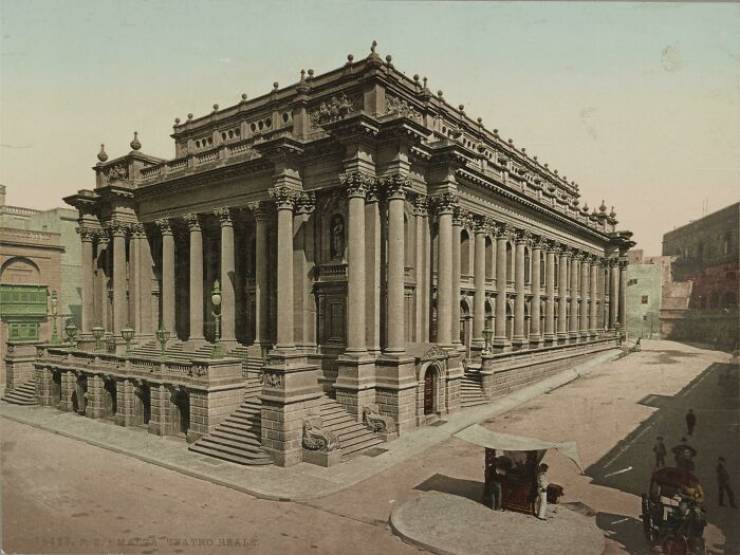
All of these things are currently happening in China today because the government recognizes that to have a happy citizenry, you must create a healthy and happy environment to live in.
These things are NOT happening in America because America has devolved into a two class society. The oligarchy class of the 0.0001% live in isolated communities and live lavish and exorbitant lives. While the rest serve them in a very stratified existence. From their point of view (the ruling class), as long as the serf-sheeple are content enough not to revolt, who needs to provide them a good and healthy environment to live in. Rather to milk them dry while they are distracted in various political battles, and foreign wars.
And that’s the way it is.
Today we are going to look at the loss of these beautiful buildings and structure. We will not focus on the American progressive movement, and the American rise of the psychopaths. But rather we will simply morn the loss of buildings and structures as “works of art” in their own way. I hope you enjoy this post.
“The Original Neue Elbbrücke Bridge From 1887-1959 In Hamburg, Germany”
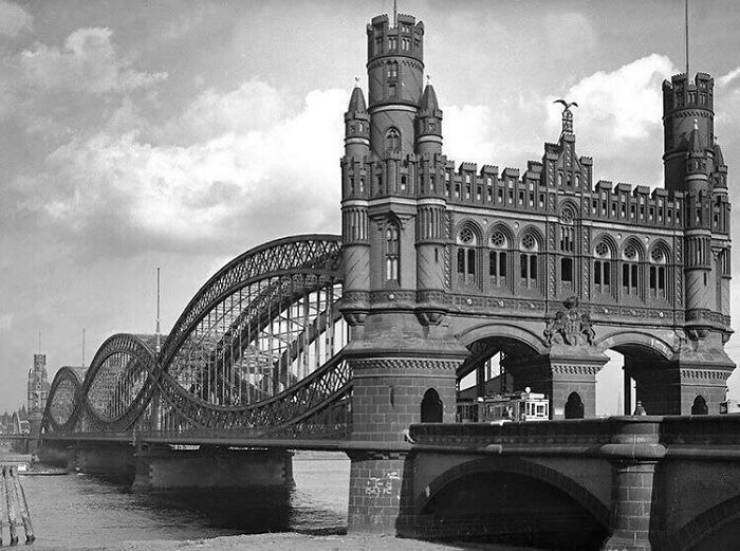
When I lived in Indiana I saw outdoor ice skating rinks that had been turned into open air garbage dumps, public swimming pools that had been cemented in, statutes what had been torn down and now all that existed was a plot of land with a pedestal and a bunch of old tangle weeds.
I saw housing complexes going up in areas that was fenced off “for posterity so that others can enjoy the beauty of old growth forests”, and I saw housing developments bull-dosing beautiful meandering streams, brooks and low rolling hills.
I also saw a parking lot where an old local swimming hole used to exist.
When the society becomes that of a money grabbing venture by the most evil psychopaths in society, there is no room for anyone else, beauty, or society.
““It’s Not Possible To Take Such A Photograph Anymore, As The Buildings Outside Block The Sun Rays.” Grand Central, NYC (1929)”
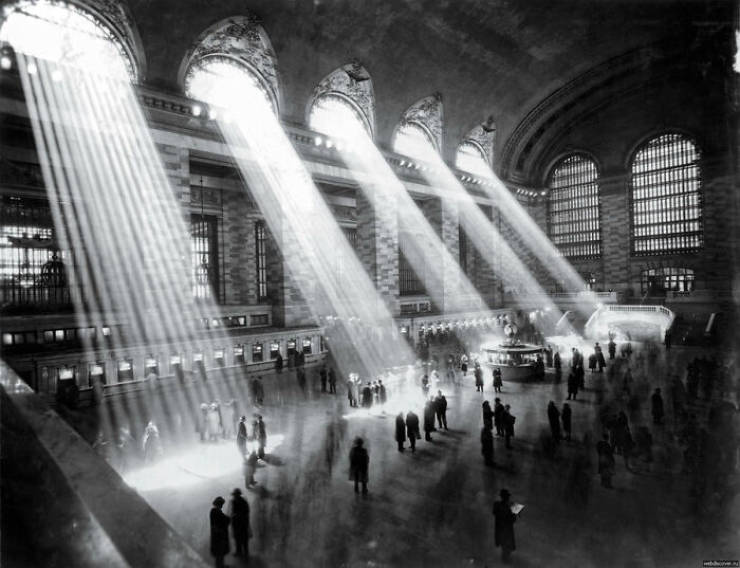
Indiana was an eye-opening experience for me. I used to visit the local libraries and go into the local history section and research the area where I lived. So much history.
While today it is flat and filled with soy beans and corn fields as far as the eye can see.
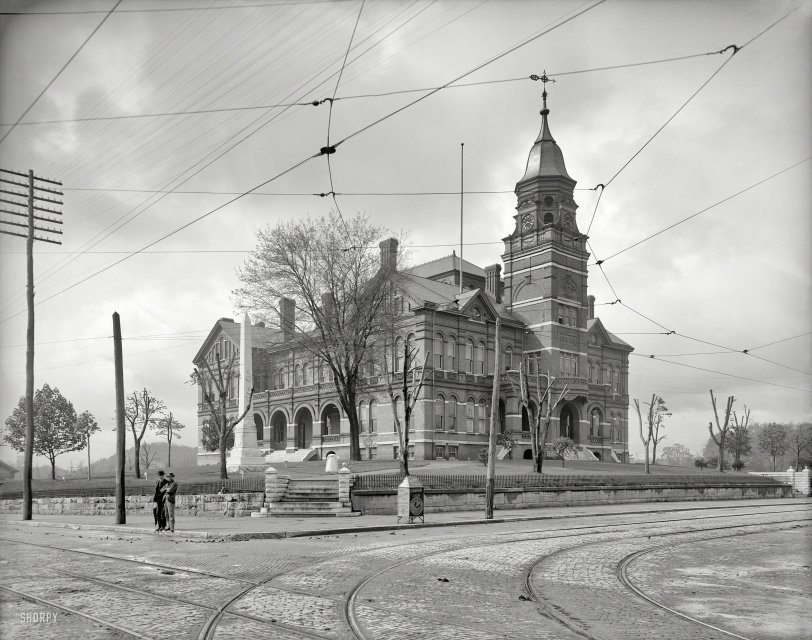
But you know, back when the “white settlers” were moving Westward, the land was mostly wooded with large and expansive old-growth forests, fine babbling brooks and tall wide based trees covered in deep plush mosses.
Not today. Indiana is a farming state. It’s changed, but not every change is for the best.
“Lost And Rediscovered”
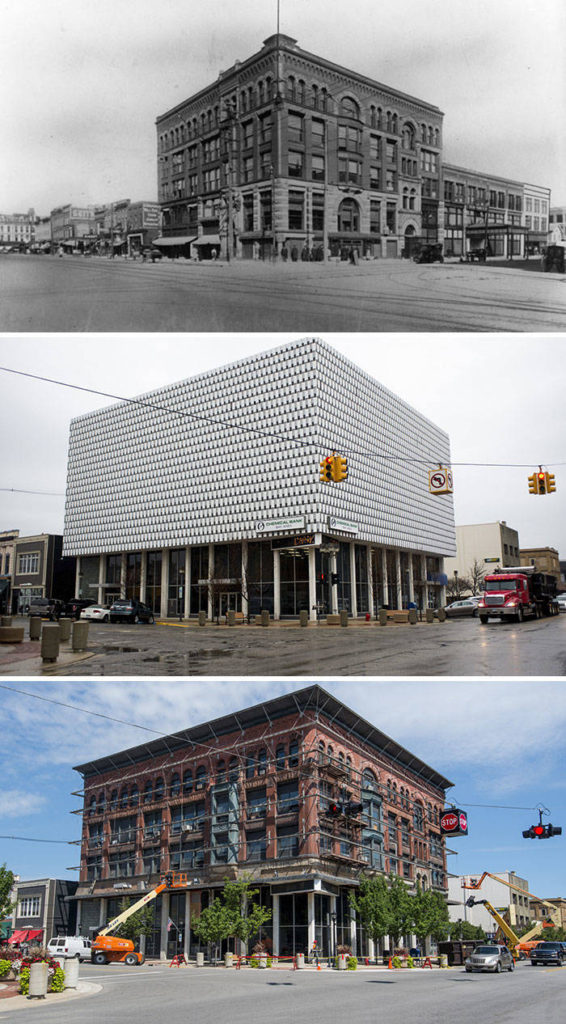
So there is some hope.
One of the things that I lament about China, but I never talk about, is how the old is all being displaced with the new. yeah. I like the new malls, the clean and efficient public works and all the rest. But I believe that some attention must be made to preserve the past.
“The Hotel Netherland (NYC) Photographed In 1905 And Later Demolished In 1927”
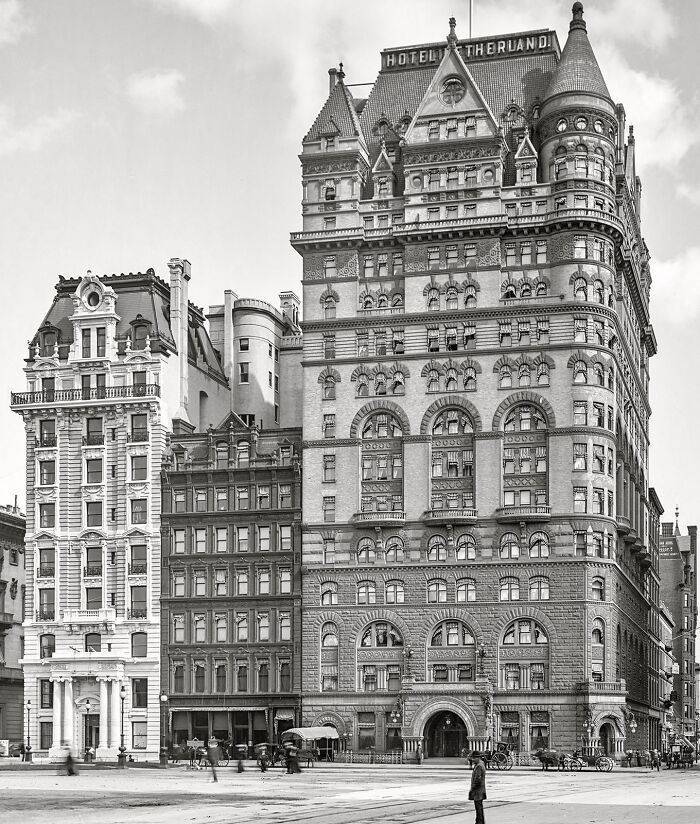
Surely, China is trying.
Tree are being planted, parks are being established everywhere, and there are local committees all over the place dedicated to preserving the past. Some ancient and historical sites are going under.
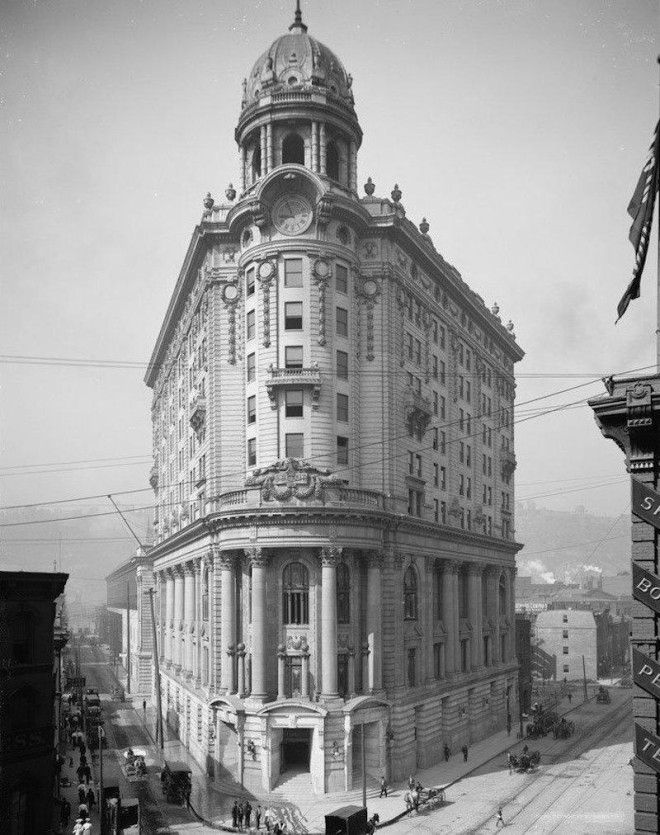
If not, then are being renewed in some “architectural improvements” for the best of society. You know, maybe the ruins have their own beauty, maybe?
“Built In 1504, Demolished In 1910. What Was The Oldest House In Hamburg, Germany”
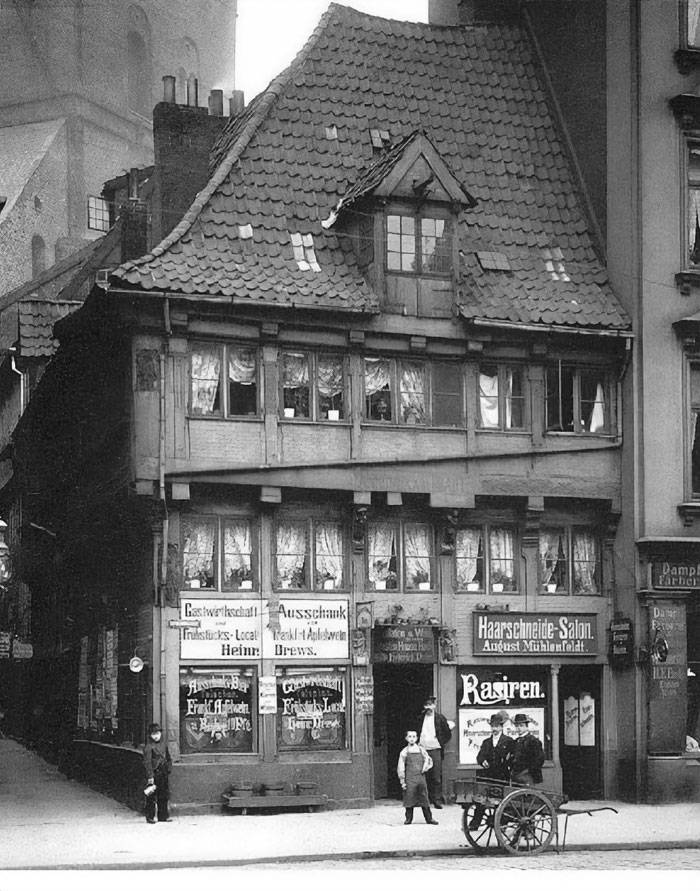
California was a land of forests that were actually nothing more than “Christmas trees on gravel”, and if you all have ever been to CA, you will know what I am talking about. however, there is some serous history in Northern California near Chico and the areas near San Francisco. The entire Pacific North West is dotted with character, and you can see it in the movies “Labyrinth“, “First Blood (a Rambo movie)” and “The Goonies“. You can see that it resembles Pennsylvania is so many ways, that I automatically became attracted and attached to it.
“The Elisabeth Bridge Built In 1903 Budapest, Hungary. It Was The Longest Single-Span Bridge In The World At The Time And An Engineering Marvel. Following The Retreat Of German Forces From The City In Ww2, It Was Blown Up In The Morning Of January 18, 1945. Replaced In 1964 By A Modernist Bridge”
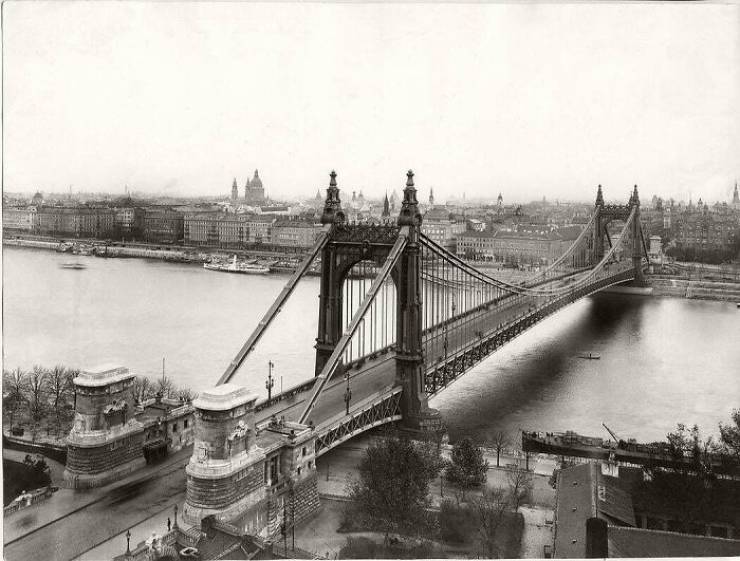
The local towns all have historical societies and their history is all very interesting. I particularly loved Auburn in this regard.
They had a museum, and in it was a full length ball-gown all made from a woman’s hair. I have never forgotten about it. I well remember going into the renovated Victorian style building and gawking at the dress while licking some frozen yogurt from TCBY. But that was on another world line and on this one people eat ice cream more than yogurt cones.
“Medieval Town Of Hildesheim, Lower Saxony, Germany. Once One Of The Most Picturesque And Pristine Late Medieval Towns In Europe. Destroyed On March 22nd, 1945, One Month Before The War’s End”
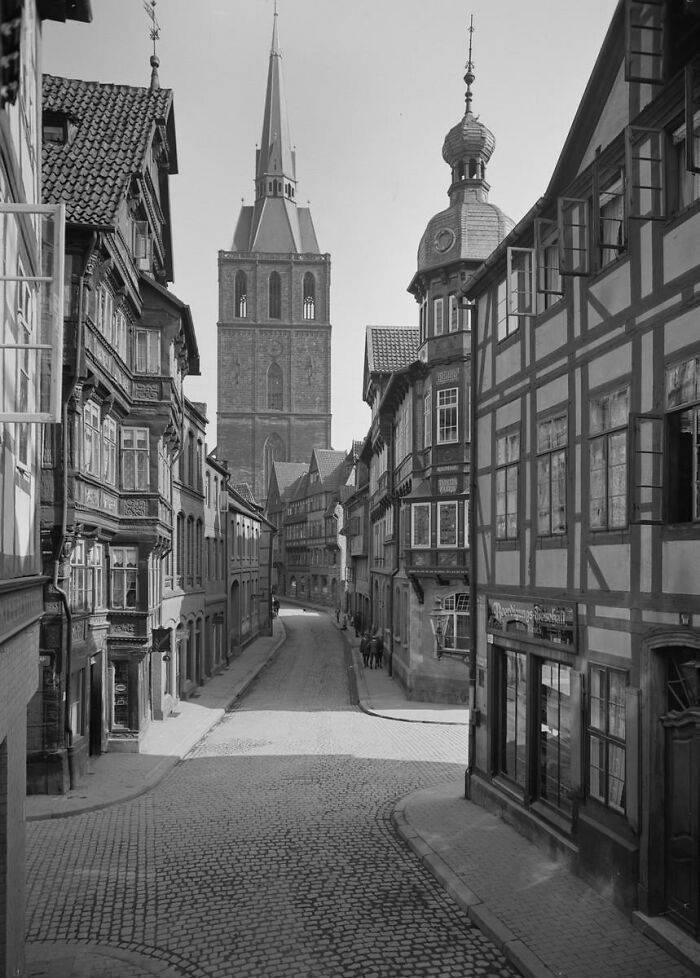
You know, when you are in a place, it is the environment that makes it special. The people, the smells, and the style of the local architecture all contribute to the ambience. It’s what makes events special.
I can relate to you special time that I have had singing with a girl on the pier in Salem Massachusetts after we had pizza and wine in a local restaurant (with red checkered tablecloths) and a candle in an old wine bottle. Or chilling out in the cemetery next to my university in Syracuse New York, or grabbing a hot dog in an obscure diner on a side alley in Philadelphia (maybe I should have gotten a Philly cheese steak sandwich).
The point is that if everything is nothing but white bland boxes or McMansions you miss out in life and special experiences that enhance the senses.
“Cincinnati Public Library 1871-1955”
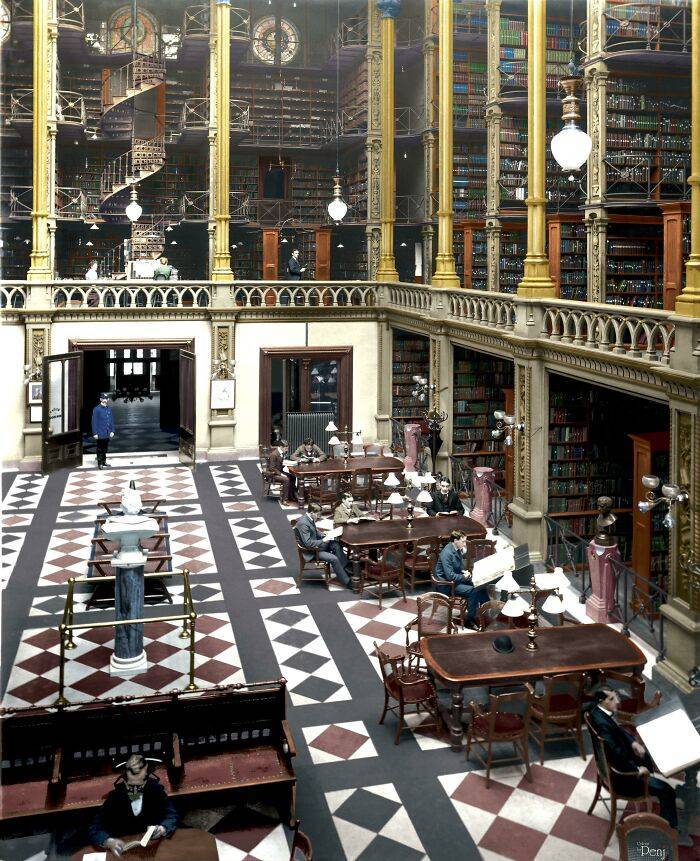
When I lived in Indiana I was surprised how plain and sterile everything was. Restaurants, aside from well established chains were just empty rooms with the cheapest plastic chairs and the barest tables. The food was the cheapest to make and the most expensive to sell. Iced tea came in a huge tureen and provided sugarless without lemon, mint twig or orange, and provided in the a really bland way. It was like eating in a school or hospital cafeteria.
Seriously.
“The Saltair Pavilion 1900-1925”
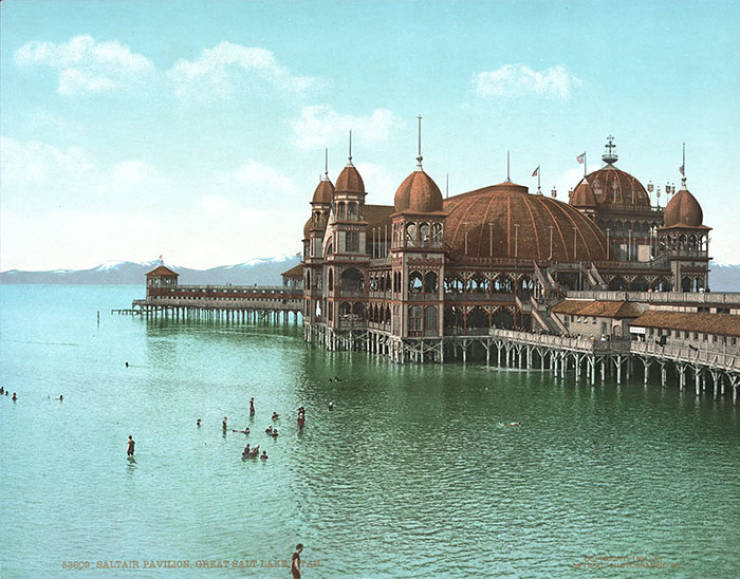
People you all need to look at things from a aesthetic perspective; one of pleasure and beauty instead of just one of profit. Why are water holes from the last century filled in or cemented over? Because no one could profit from them? That’s fucking sick! Seriously. Your society is demented if it allows them to be destroyed simply become someone cannot profit from them.
Don’t understand. I task you. Go to the local historical society and research where all the old (free) water holes were. Get the locations on a map (easy to do int he library) and go search them look. Look at what they are like today.
Replaced with tiny little hands grasping and clutching at your wallet. This is not a society. It is a concentration slave camp.
“Warsaw, Poland 1939. No Need To Say What Happened Here. Truly A Tragic Loss”
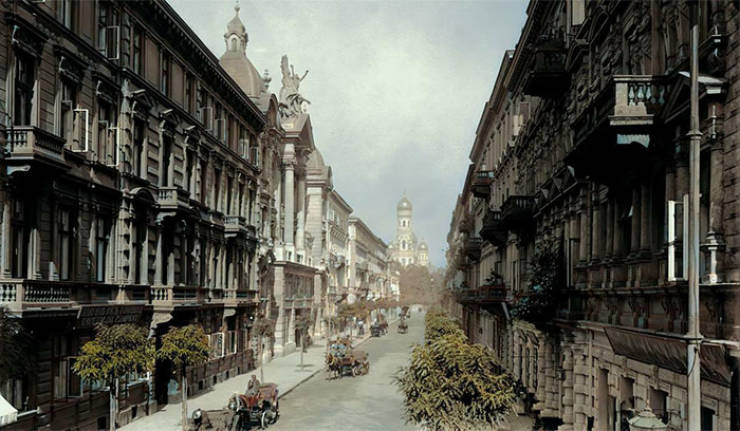
And you know what is supremely frustrating to me? It’s that no one else notices. They just accept it as a “good thing” and as “progress”. They do not see that taking something that is free and turning it into something that someone can profit from is EVIL. They fail to see this.
They are the one’s with a head problem.
One hundred years ago homes were quite different. People lived in multi-generation homes. The grandparents, the uncles and aunties and their kids, and you and your family all lived int he same house. Each family had a suite of rooms which consisted of a bedroom or two, a living area, a bath and a kitchen and a porch.
They didn’t need to mow grass. They had the lawns planted in clover.
They didn’t have or need air conditioning. They had high ceilings with above the door transoms, and large spacious deep porches with swings, swing gliders and porch swings and big enormous thick trees that shaded the entire home form the relentless sun in the Summer.
Not today.
The design of homes is such that the owners NEED to purchase systems that they must pay for weekly or monthly to maintain a comfortable standard of living.
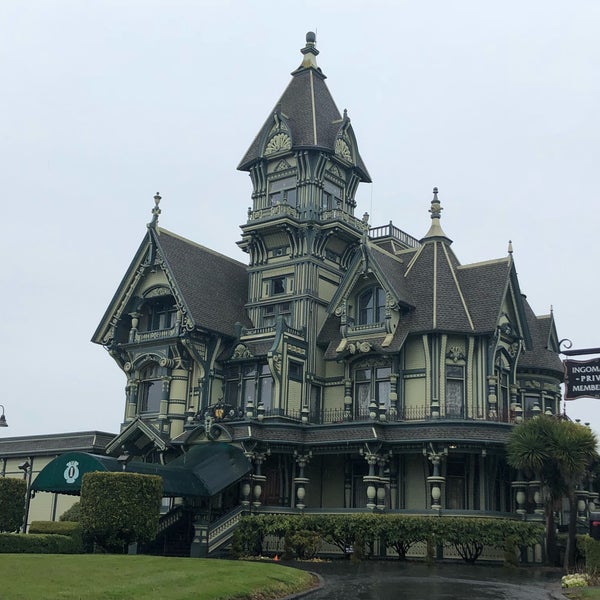
Now, of course, these homes are now considered to be mansions. After all they have multiple bedrooms, and living rooms, but really are they any different from McMansion’s?
In those days they didn’t have wall to wall carpeting. They had real hardwood floors. They didn’t have air conditioning. they used fans, and high vaulted ceilings to direct the hot air outward. They didn’t have refrigerators, they had cold cellars, and other systems that sound so primitive, but in all functionality work just as well today as they did back then.
A cold cellar would store vegetables and fruit for up to a week. So does a refrigerator. A high ceiling room can keep only slightly warmer than an air conditioned room set at 75 degrees F in the Summer. A house with windows open allows for the early morning and evening breezes to clean out the bad odors and smells that accumulate. Today we must use a selection of detergents to scrub the rooms to maintain a pleasant environment.
To live in the “old way” is to live cheaper, but only take a minor hit in benefit. Unless you like to keep your air conditioner set to freezing, there is no benefit in having a A/C unit unless you have enough disposable income to afford the monthly electrical bills.
And yeah. I get it. When the weather is super hot and humid, having an air conditioner does make all the difference. My point is this; how many days per year do you need to run it?
“The Late 3rd Century Tetrapylon Of Ancient Palmyra, Syria. Deliberately Destroyed By Isis, 2017”

If you have the money, and the ability, then go ahead use and have all the modern conveniences. I have, after all, spent many years designing these appliances. So it’s all up to you. But I want to underline that there is a very special characteristic of a home with a big wide porch and a nice sliding glider.
“Times Square (1919) Before All The Renovations And Billboards”
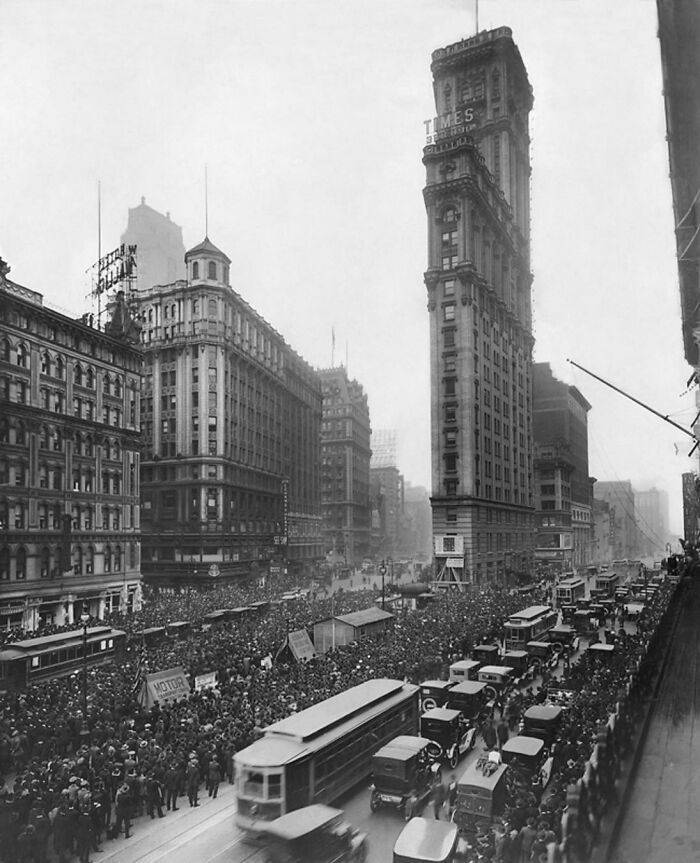
When I was 16 years old and working, one fine old lady came up to me and told me that her granddaughter really had a shine to me. She was 14 years old and the woman (Her name was “Auntie Gay”) arranged a date.
She had this big old Victorian home on one of the broad streets in East Brady, PA, and it was near the Captain Brady mansion. She invited me in, and made us some nice lemonade, and allowed us to drink it on the porch on a nice glider there. She left us alone, but we were not allowed off the porch. We were permitted to hold hands but when I tried to kiss her, the porch light went on.
I look back now. It was really charming.
“The Old Dutch House In Bristol, England. It Was Constructed In 1676 But Was Destroyed During The Bristol Blitz Of 1940 By The Luftwaffe”
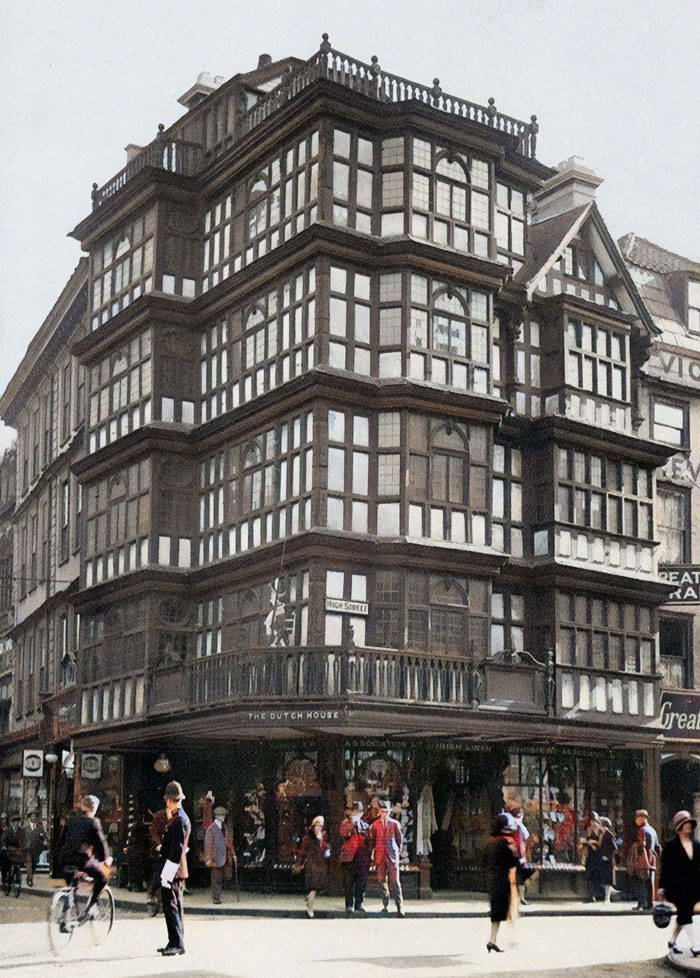
She had this enormous kitchen with floor to ceiling cupboard that reached to the sky and two doors in it. One led to a pantry with was bigger than my bedroom (well, almost heh, heh) and another lead downstairs into the cold cellar. Where it was dark, damp, cool and gloomy. She had a thousand glass jars of all sorts of preserves and stored food there, as well as baskets of herbs and other items such as tree bark and Lord knows what.
“The Original Waldorf-Astoria Hotel In NYC, Demolished In 1929 To Serve As The Site For The Empire State Building”
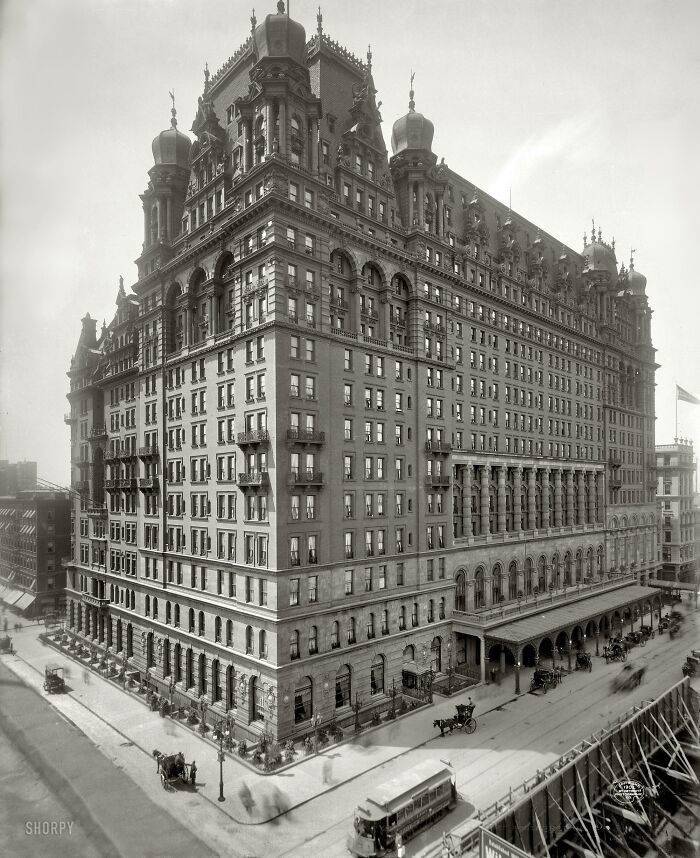
The thing that I remember most about that house was the huge entryway. Once you existed the inner alcove and entered the house, you were in this large room, and in the middle of it was a circular table. Sitting in the middle of the table upon a lace table cloth was this wonderful Tiffany lamp. It was a beautiful work of art. I really admired it.
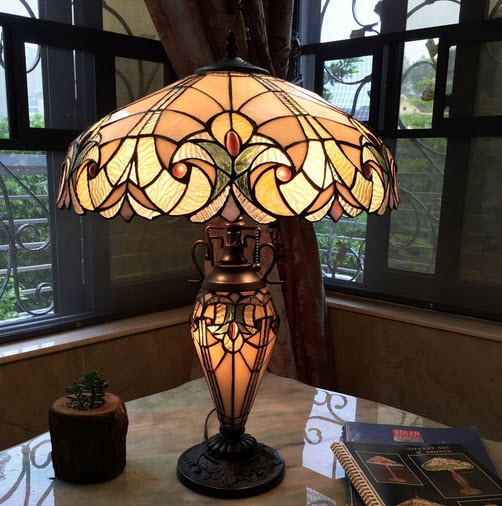
I have always admired the details in home and building design, and while I am a big fan of the Victorian style homes, I have to admit that I actually love those wonderful “Craftsman Houses” that become popular briefly before World War II.
These are truly works of art, and are quite adorable. Oh, to be a young boy growing up in either a Victorian or a Craftsman style home would have truly have been a wonderful experience. I can well imagine hanging out in a nook or two with my cat, and reading comic books while munching on a leftover chicken salad sandwich.
Such was my childhood dreams.
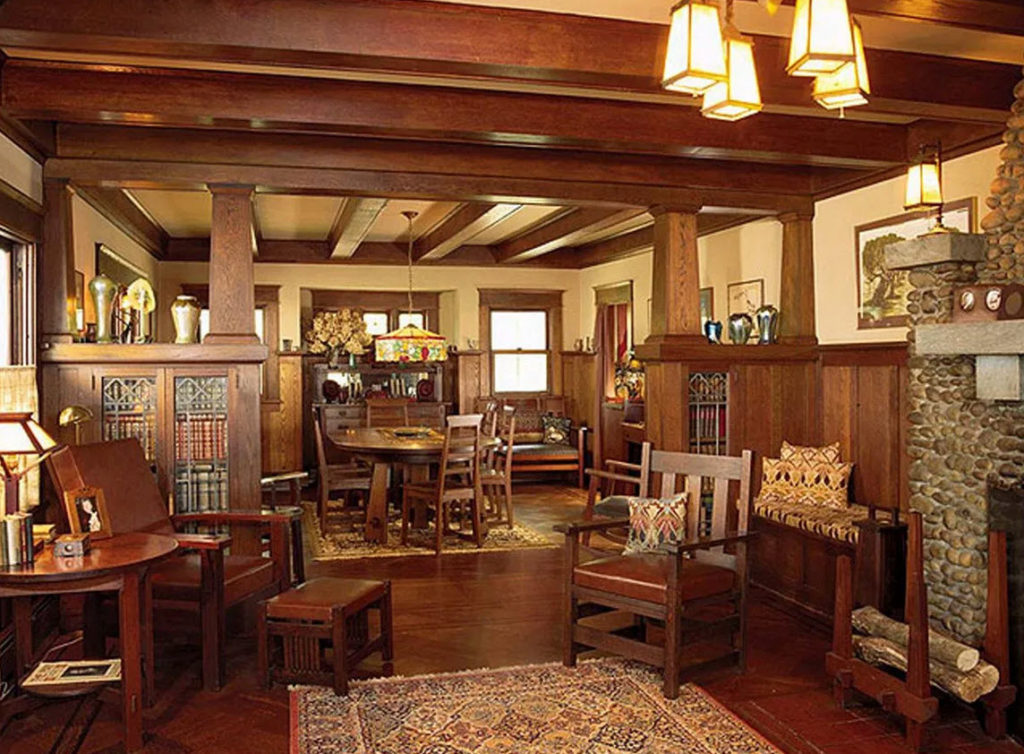
But I digress.
Why don’t we design buildings, parks, venues, environments for people to live in? Why does America seem to be nothing more than a bunch of hastily and cheaply produced boxes for people to rush from container one to container two? Why that’s exactly what it seems like. It really does.
“Bowhead House, Edinburgh, Scotland. Built In The Early 1500s, It Was Demolished In 1878. Many Locals Mourned The Loss, Having Regarded The House As One Of The Most Distinctive Relics Of The Old City”
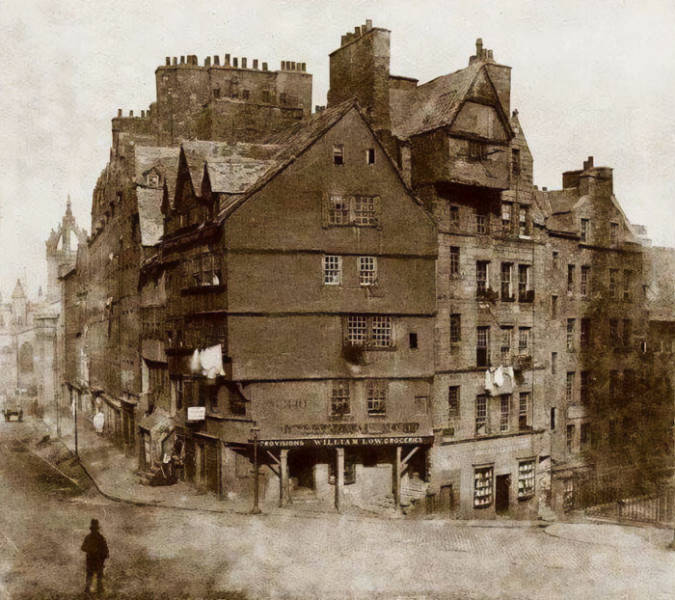
To some people holding on to the old is a relic of the past, and to some degree I can actually see that. Change is how we grow. But that is not what I am talking about here. I am talking about taking things that work, things that are beautiful, things that make life pleasant and replacing them with the bland, the cheap, the simple and the ugly with no consideration what so ever to the people who live around those places.
it’s like the entire concept of American suburbia. It’s just a landscape of little boxes filled with little people doing little things.
“Sibley Breaker, Pennsylvania, Built In 1886 And Destroyed By Fire In 1906”
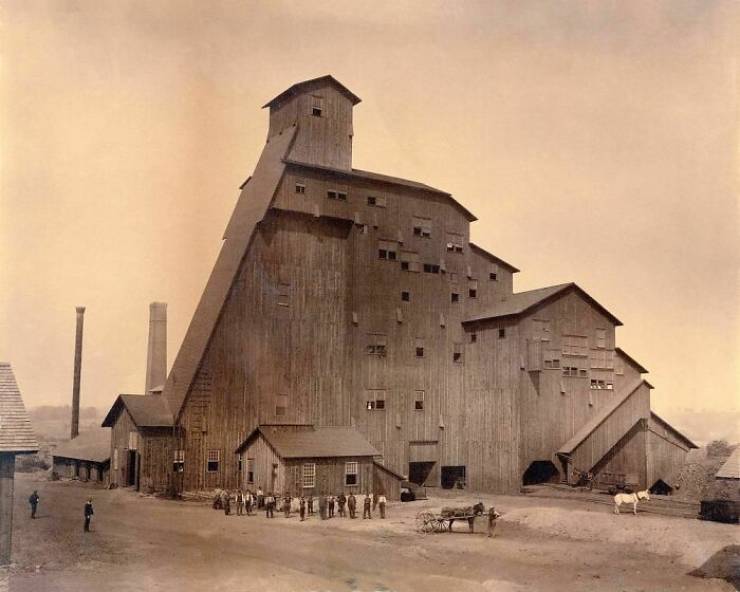
Here is some images of appreciation to the past.
Here are some thoughts and images that I have found that inspires me, and stirs the porridge in my soul. All credit to the wonderful and skilled architects and craftsmen who built these structures. And you too can enjoy them with me.
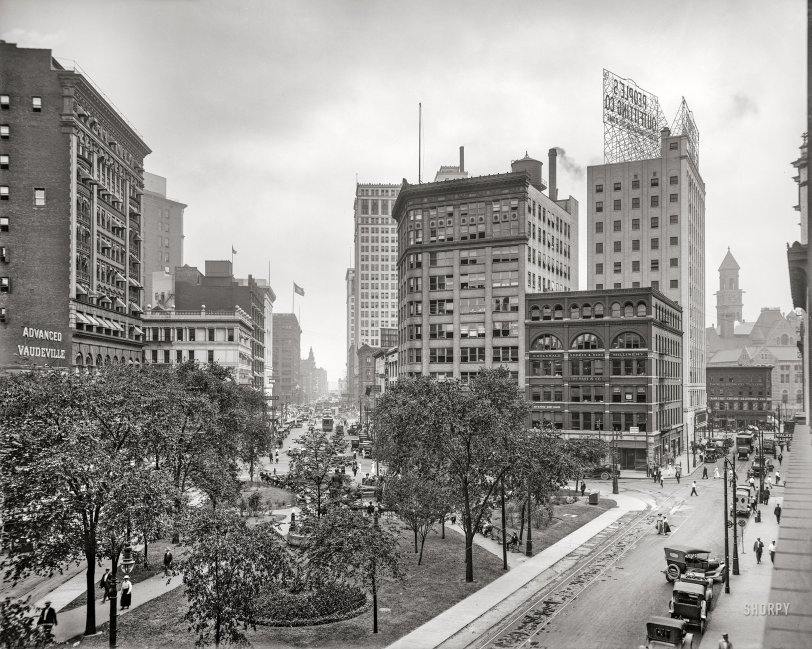
And yeah, It’s just a park in a city. One that is now just mile and miles and miles of ruin. But before the psychopathic oligarchy took over, it was a place of commerce, and a place where people lived, made a living for themselves and their families and thrived.
The Hippodrome stood on 6th Avenue in New York City from 1905 to 1939. It was one of the largest theaters of its time, with a seating capacity of over 5,000.
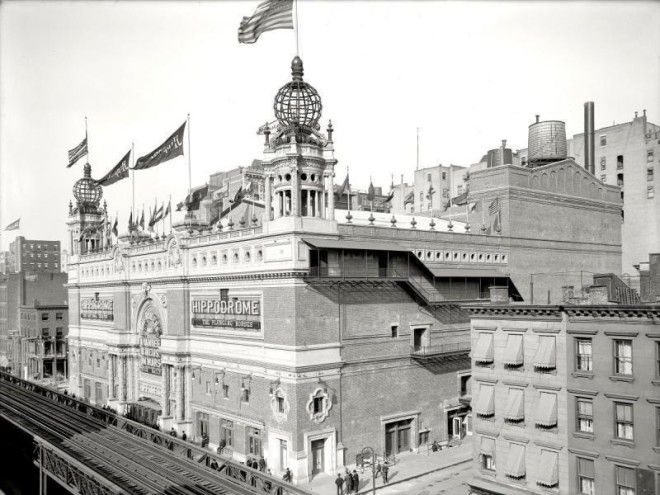
I suppose that you can argue that it’s just fashion. Buildings come and go and its similar to fashion. The building styles change as the generations cycles.
I understand that.
The Old Metropolitan Opera House was built in 1883 in New York City. First home of the Metropolitan Opera Company, it was demolished in 1967, and performances were moved to Lincoln Center.
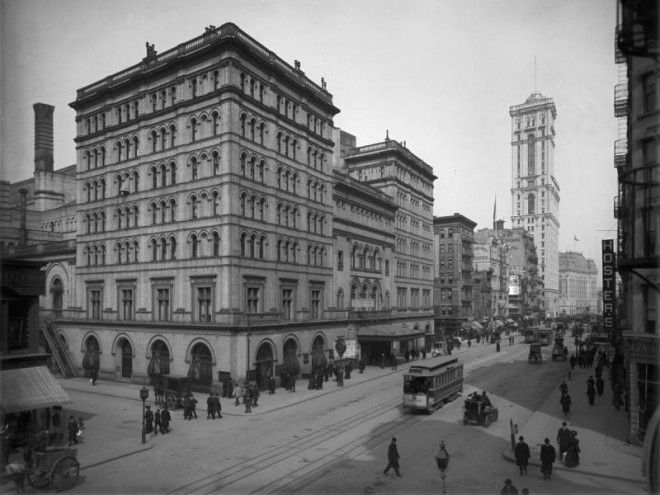
The thing is, and this is my point, is that for the last one hundred years, America has dominated the world.
And as the leader, it has influenced the rest of the world.
And the influences are driven downwards from Washington DC.
And since Washington DC has become to focal point for all the global psychopaths in the world, they have, in turn, influenced the entire planet.
And the ruins that you see in the West are but the debris from their carnage.
Chorley Park was the fourth Government House constructed in the early 20th century in Toronto. The birthplace of Toronto alderman John Hallam, it was bought by the city in 1960 and eventually demolished in 1961.
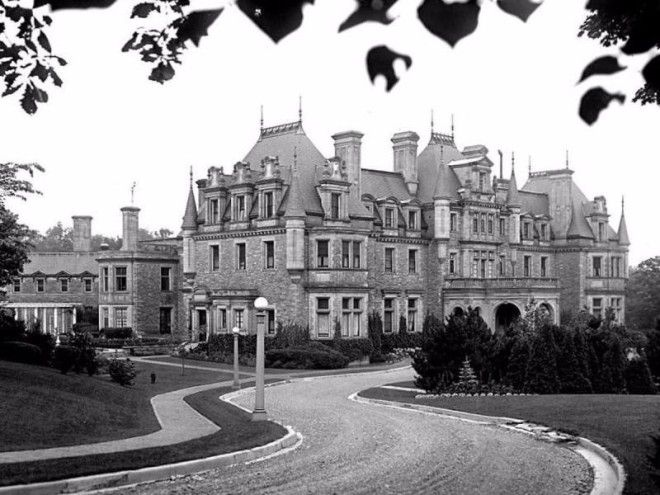
Many of the great building, the most impressive buildings, and the important building were all torn down in America between 1958 and 1965. Why?
Here’s one of the casualties…
The Schiller Theater Building (later known as the Garrick Theater) was built in Chicago in 1891 and was one of the tallest buildings in the city at the time. Inside was a 1,300-seat theater, which was razed in 1961.
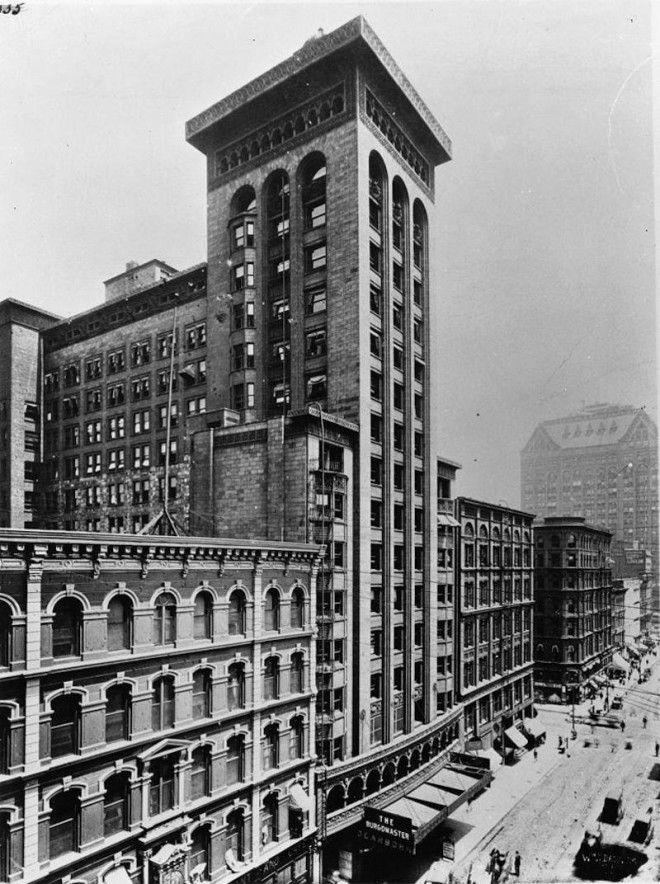
Here’s another…
The Chicago Federal Building had a stunning post office and courthouse. The building was demolished in 1965, when it was replaced with the Kluczynski Federal Building.
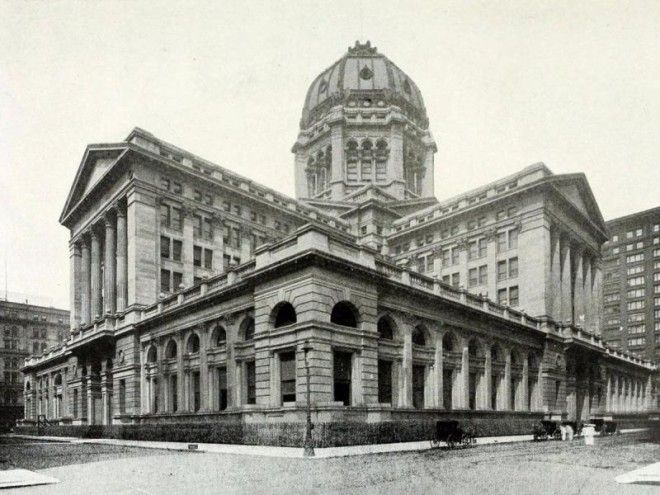
The renovations towards the “new America” seemed to happen in waves. The 1960 (plus or minus a few years) seems to have a great affect on me personally, but the rapid destruction of American buildings had a second wave afterwards that hit around 1970 or so.
I wonder if this is a consequence of human herd behaviors.
The Old Toronto Star Building was built in 1929 and stood at 288 feet tall, an impressive feat at the time. It was torn down in 1972.

Here’s another casualty from that particular time, the Singer building. As an aside you all might know that I used to hang around with, and party with, Susan Singer the multi-Billionaire heiress to the Singer fortune. She was a nice girl. She was always worrying about how thick her ankles were though. Her ankles were just fine, and she was attractive, and nice.
But you know, that’s life. Its a really strange quirk she had, but I suppose she would tell you all that I was pretty much a weird dude in school as well. LOL.
Conclusion
I like to believe that change is a good thing. That is how we grow.
But I think that change FOR THE BETTER is and should always be welcome. While change for the worse should be avoided at all costs.
When we have a situation where profits for a tiny, tiny small minority governs the shape, appearance and structure of society, eventually that society will break down and collapse.
First you will see minor things disappear.
Then others will vanish with great rapidity. Until all that is left is the barely functional, most expensive, and of questionable utility for the people and the society to use.
And isn’t that what we see today in America?
The ONLY way that this is going to change is to [1] change the structure of the government so that psychopaths no longer can get into positions of control, and [2] Remove all the psychopathic personalities present int he Untied States today.
Which both seem to be quite unlikely.
Therefore…
It’s time to have a picnic and enjoy some companionship, some fine picnic food, and some frosty beers, or a few bottles of red wine. Life is too short to worry about things that you cannot control.
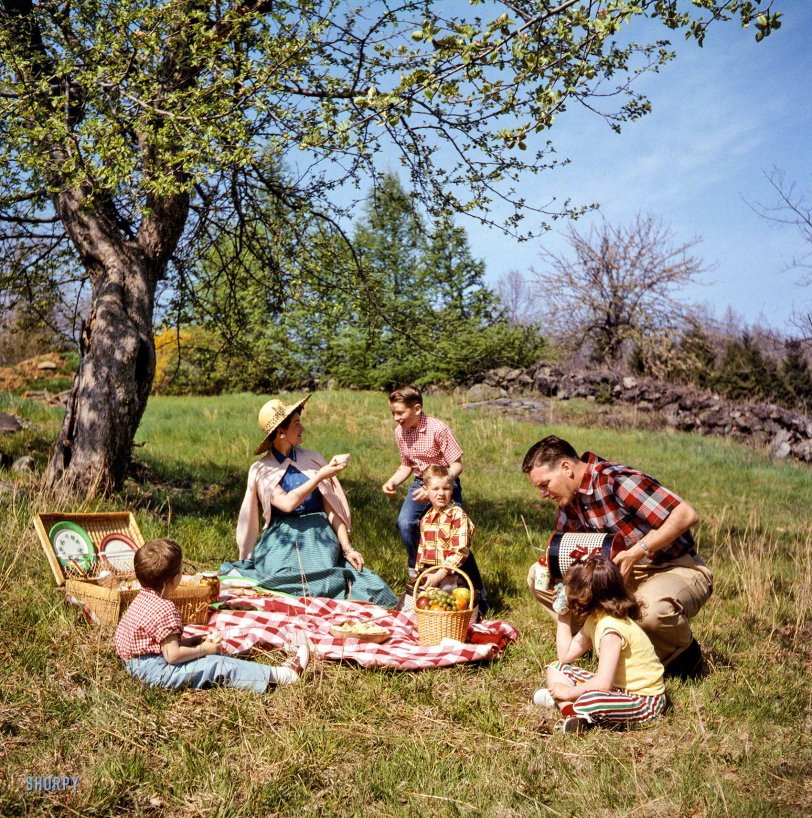
Have a great day you all!
Do you want more?
I have more posts in my Art Index, here…
ART.
Articles & Links
Master Index.
You’ll not find any big banners or popups here talking about cookies and privacy notices. There are no ads on this site (aside from the hosting ads – a necessary evil). Functionally and fundamentally, I just don’t make money off of this blog. It is NOT monetized. Finally, I don’t track you because I just don’t care to.
- You can start reading the articles by going HERE.
- You can visit the Index Page HERE to explore by article subject.
- You can also ask the author some questions. You can go HERE to find out how to go about this.
- You can find out more about the author HERE.
- If you have concerns or complaints, you can go HERE.
- If you want to make a donation, you can go HERE.
Please kindly help me out in this effort. There is a lot of effort that goes into this disclosure. I could use all the financial support that anyone could provide. Thank you.
.
Do you want more?
I have more posts in my Art Index here…
ARTArticles & Links
You’ll not find any big banners or popups here talking about cookies and privacy notices. There are no ads on this site (aside from the hosting ads – a necessary evil). Functionally and fundamentally, I just don’t make money off of this blog. It is NOT monetized. Finally, I don’t track you because I just don’t care to.
To go to the MAIN Index;
Master Index.
- You can start reading the articles by going HERE.
- You can visit the Index Page HERE to explore by article subject.
- You can also ask the author some questions. You can go HERE .
- You can find out more about the author HERE.
- If you have concerns or complaints, you can go HERE.
- If you want to make a donation, you can go HERE.
Please kindly help me out in this effort. There is a lot of effort that goes into this disclosure. I could use all the financial support that anyone could provide. Thank you very much.

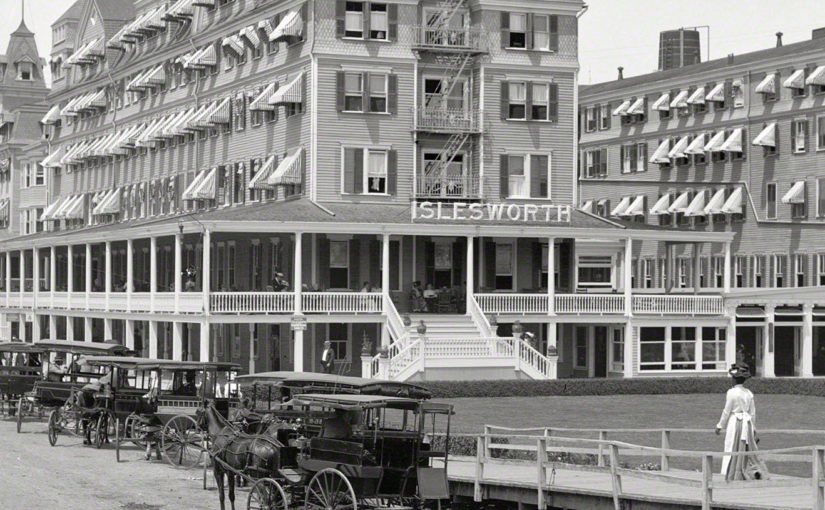

Thank you for this post Mr. Man! It put a smile on my face. Iconic architecture of the past is a beautiful thing to behold